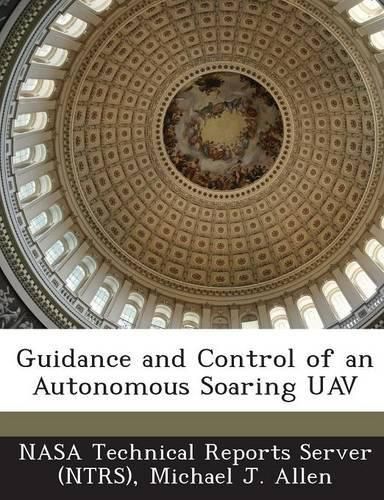Readings Newsletter
Become a Readings Member to make your shopping experience even easier.
Sign in or sign up for free!
You’re not far away from qualifying for FREE standard shipping within Australia
You’ve qualified for FREE standard shipping within Australia
The cart is loading…






Thermals caused by convection in the lower atmosphere are commonly used by birds and glider pilots to extend flight duration, increase cross-country speed, improve range, or simply to conserve energy. Uninhabited Aerial Vehicles (UAVs) can also increase performance and reduce energy consumption by exploiting atmospheric convection. An autonomous soaring research project was conducted at the NASA Dryden Flight Research Center to evaluate the concept through flight test of an electric-powered motor-glider with a wingspan of 4.27 m (14 ft). The UAV’s commercial autopilot software was modified to include outer-loop soaring guidance and control. The aircraft total energy state was used to detect and soar within thermals. Estimated thermal size and position were used to calculate guidance commands for soaring flight. Results from a total of 23 thermal encounters show good performance of the guidance and control algorithms to autonomously detect and exploit thermals. The UAV had an average climb of 172 m (567 ft) during these encounters.
$9.00 standard shipping within Australia
FREE standard shipping within Australia for orders over $100.00
Express & International shipping calculated at checkout
Thermals caused by convection in the lower atmosphere are commonly used by birds and glider pilots to extend flight duration, increase cross-country speed, improve range, or simply to conserve energy. Uninhabited Aerial Vehicles (UAVs) can also increase performance and reduce energy consumption by exploiting atmospheric convection. An autonomous soaring research project was conducted at the NASA Dryden Flight Research Center to evaluate the concept through flight test of an electric-powered motor-glider with a wingspan of 4.27 m (14 ft). The UAV’s commercial autopilot software was modified to include outer-loop soaring guidance and control. The aircraft total energy state was used to detect and soar within thermals. Estimated thermal size and position were used to calculate guidance commands for soaring flight. Results from a total of 23 thermal encounters show good performance of the guidance and control algorithms to autonomously detect and exploit thermals. The UAV had an average climb of 172 m (567 ft) during these encounters.